#elasmosaurus
Text


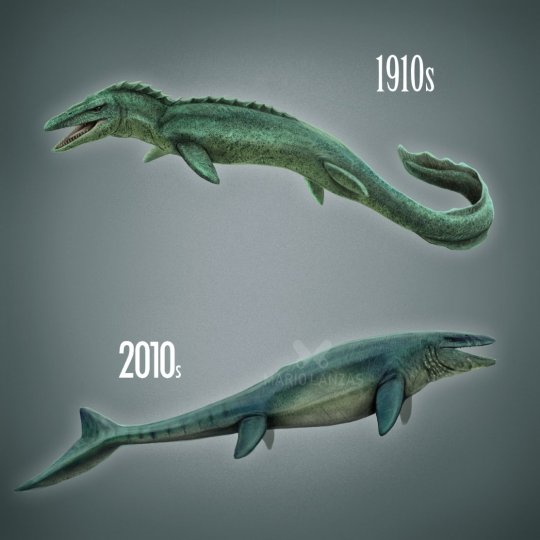
Example of how our perception of very different kinds of aquatic animals changed as more discoveries were made over the decades
Basilosaurus (cetacea) Paleogene / Elasmosaurus (Sauropterygia) Cretaceous / Mosasaurus (Squamata) Cretaceous
Many more examples in my videos dedicated to this topic
__
Youtube channel
Instagram
Prints and more paleomerch
5K notes
·
View notes
Text
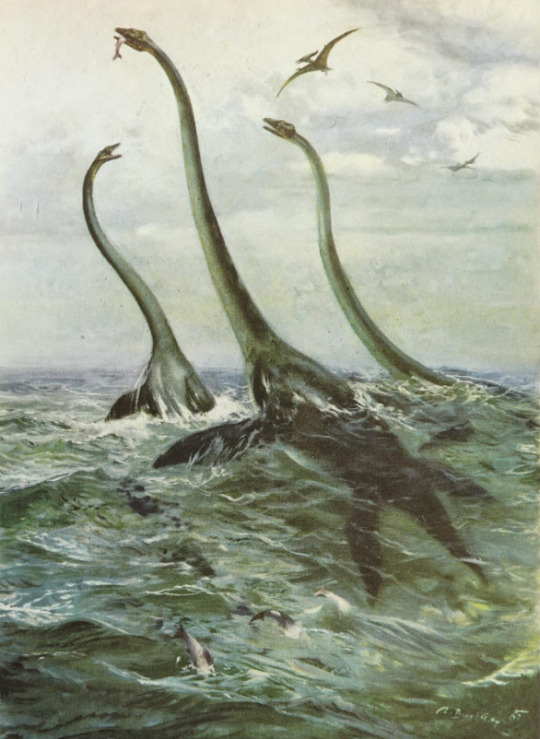
"The North American Upper Cretaceous Elasmosaurus, which attained a length of about 44 feet, was a veritable giant among the Plesiosaurs."
Prehistoric Sea Monsters. Written by Dr. Josef Augusta. Illustrated by Zdeněk Burian. 1966.
Internet Archive
1K notes
·
View notes
Text

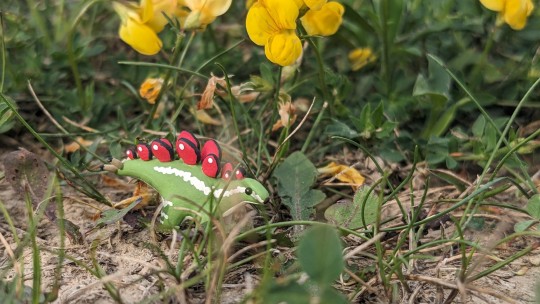
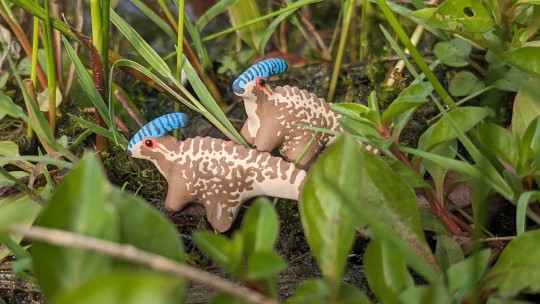
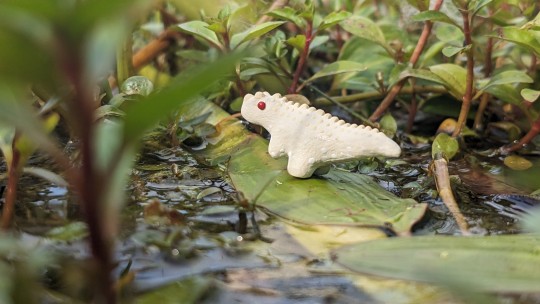

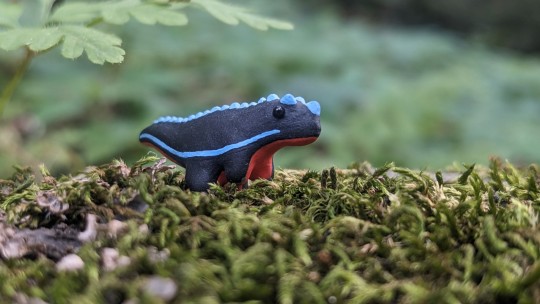




Some #TinysaursAdventures from yesterday
#paleoart#paleoartist#paleontology#tinysaurs#my art#prehistoric#dinosuar#jurassic park#art#elasmosaurus#brachiosaurus#stegosaurus#ceratosaurus#TinysaursAdventures
1K notes
·
View notes
Text
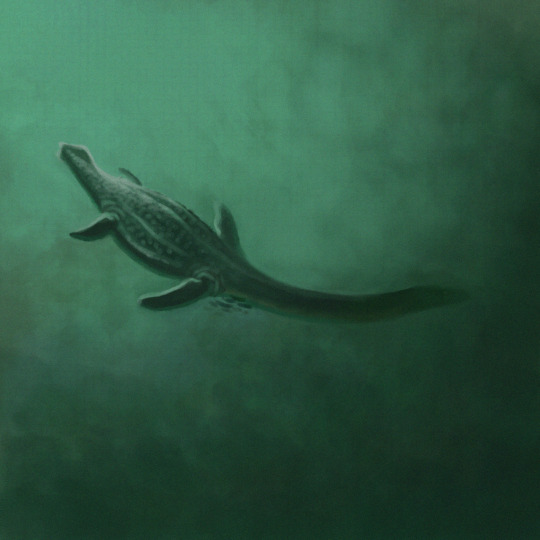
"Ghouls"
Fingerpainted on Ibispaint X, 30 Oct 2023
380 notes
·
View notes
Text
Recreating my first ever paleoart

Elasmosaur, me age 5
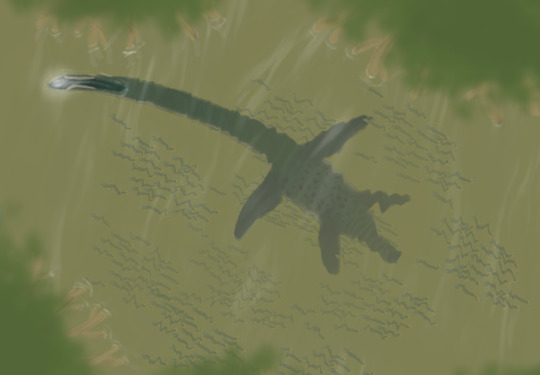
Elasmosaur, me age 10 (almost) years later
#paleoart#elasmosaurus#thalassomedon#plesiosaur#paleontology#fish#mangrove#swamp#ichthyodectes#baby fish#fish fry#xiphactinus#baby xiphactinids#actually more like juvenile
73 notes
·
View notes
Video
Prehistoric Planet’s Official Trailer is now the greatest piece or dinosaur-related media ever created.
#prehistoric planet#t-rex#dinosaurs#dinosaur#prehistoric#pterosaur#tyrannosaurus rex#feathered dinosaurs#velociraptor#carnotaurus#pachyrhinosaurus#elasmosaurus#alamosaurus#mosasaurus#triceratops#paleobiology#paleontology#walking with dinosaurs#jurassic park#jurassic world#jurassic world dominion
4K notes
·
View notes
Text

A Frosty Detour
A lone Pteranodon and a flock of Nyctosaurus have ventured a bit too far up the Western Interior Seaway.
400 notes
·
View notes
Photo
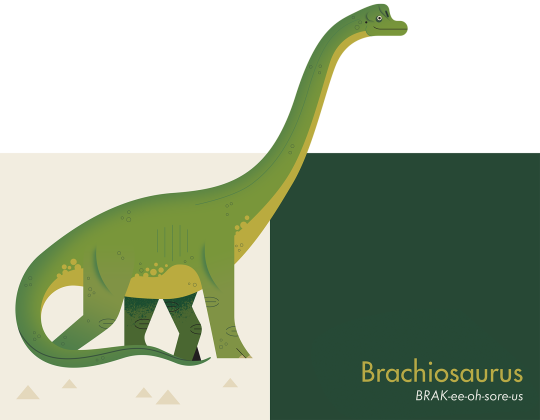


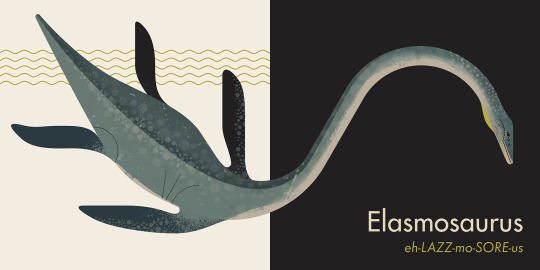
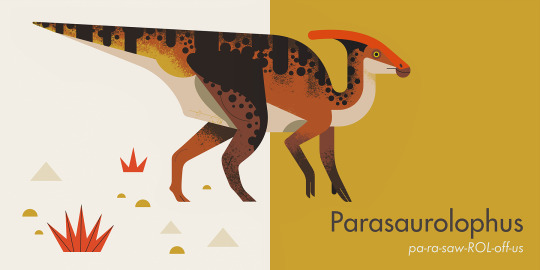
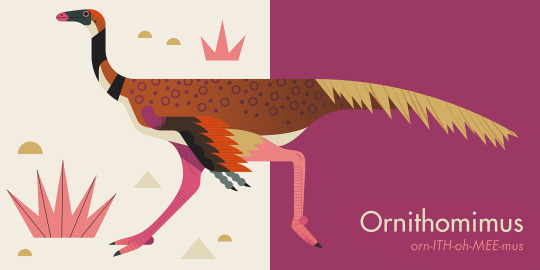
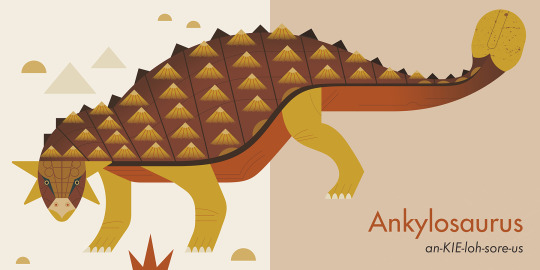

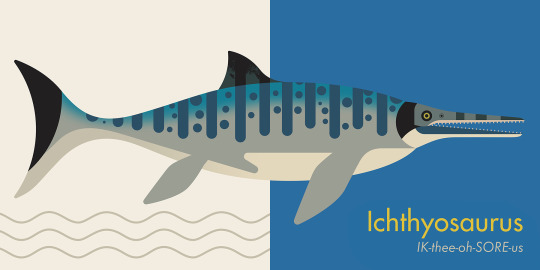

Pop-Up Dinosaurs, by Owen Davey.
"Enter an incredible world of dinosaurs and prehistoric reptiles in this stunning first pop-up book. From the familiar tyrannosaurus to the bizarre elasmosaurus, meet whole range of beautiful and fantastic prehistoric creatures. With illustrations from the award-winning Owen Davey, this is a stylish treasury perfect for dinosaur enthusiasts of all ages."

#art#owen davey#dinosaurs#pterosaurs#brachiosaurus#stegosaurus#coelophysis#elasmosaurus#parasaurolophus#ornithomimus#ankylosaurus#pachycephalosaurus#ichthyosaurus#pterodactyl#velociraptor
209 notes
·
View notes
Text
Mermay 2022: Paleontology Infuenced Merfolk
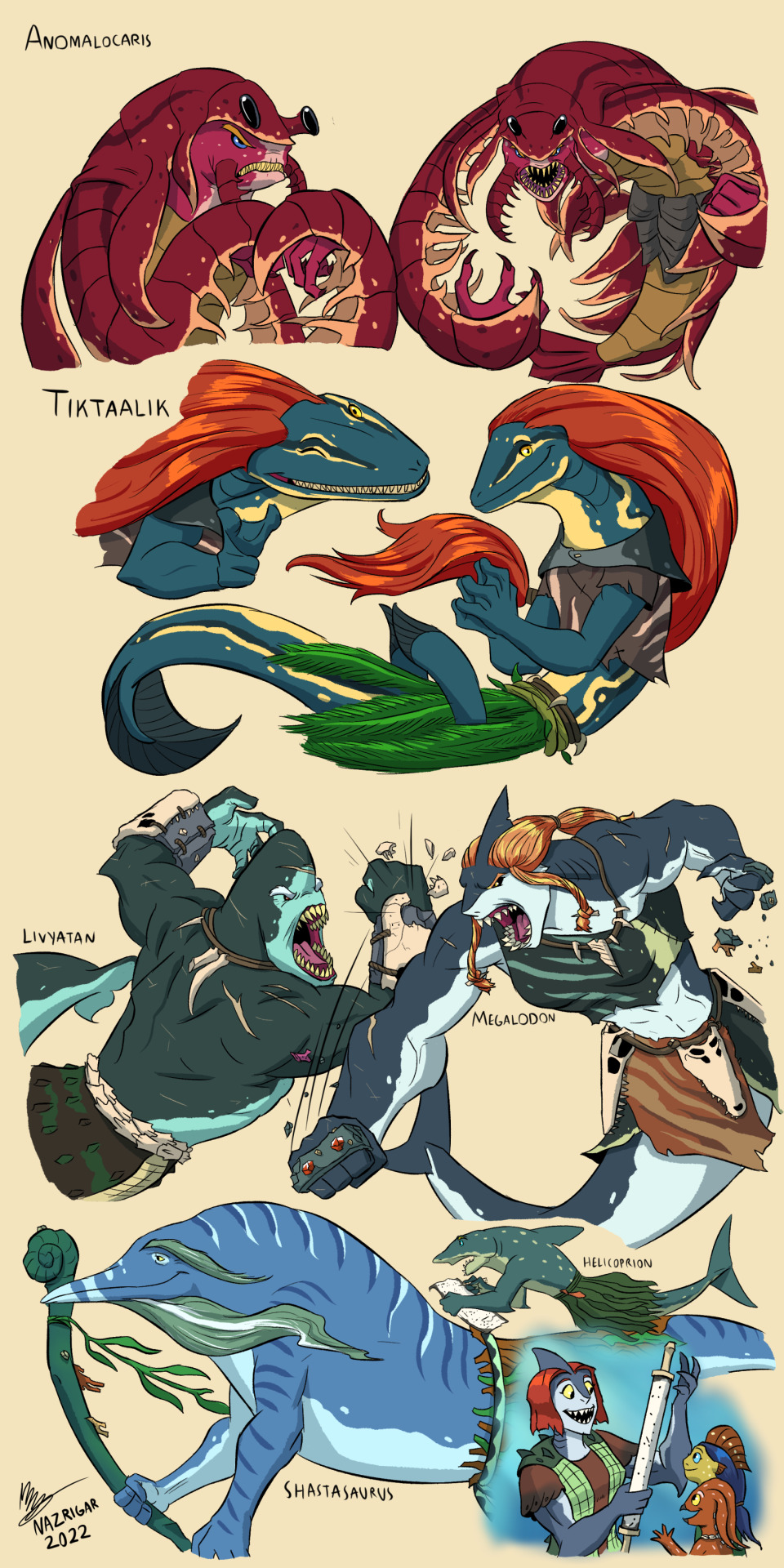
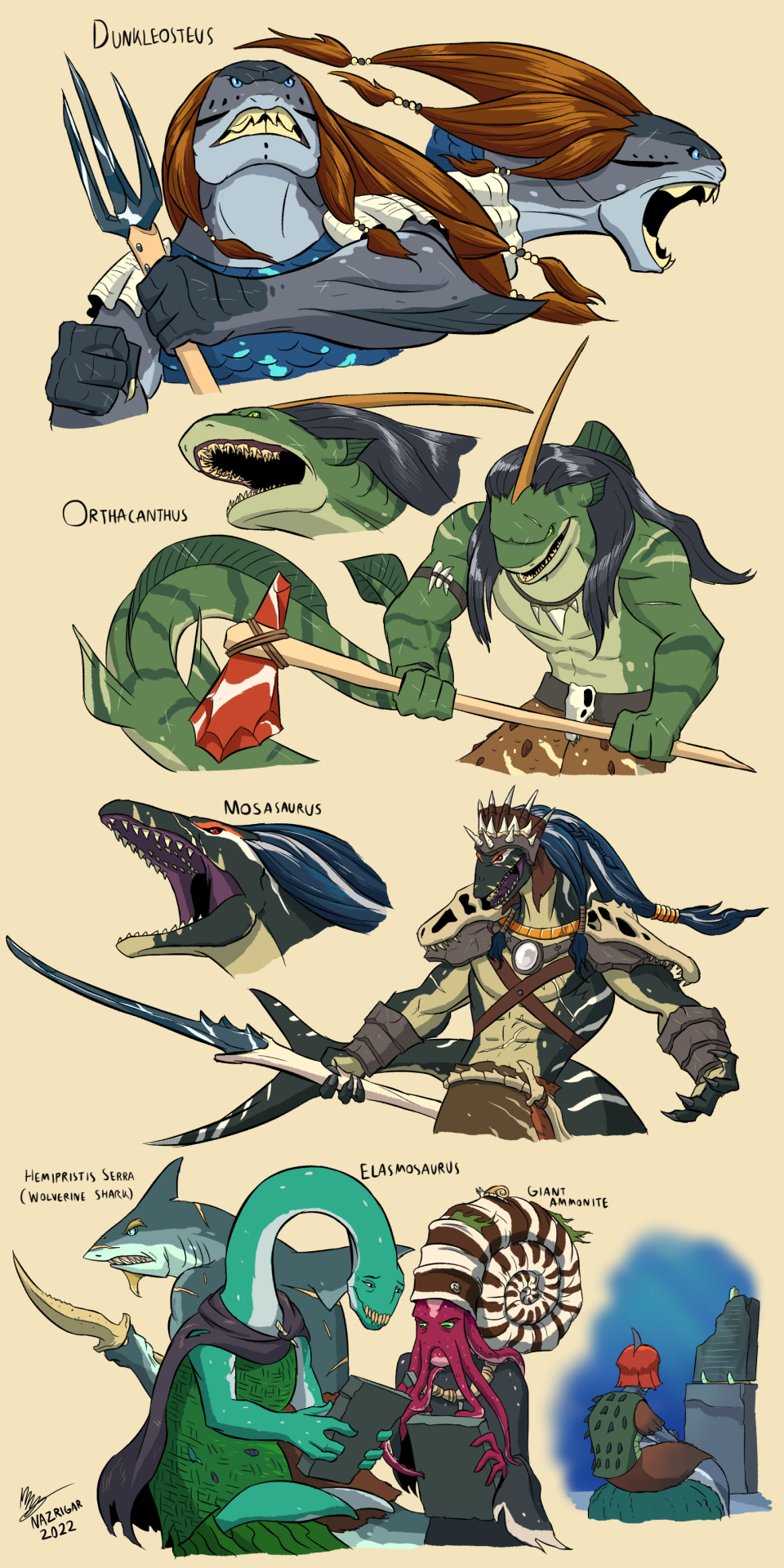
Part 1
Part 2
Part 3
The final batch of drawings for Mermay! Thank you all so, so much for the response. Never in my wildest dreams would I have thought this series to be so well liked and successful on so many of my social media platforms.
I felt like for the final batch, I wanted to explore how paleontology influenced merfolk would look like, and how they influence ‘modern’ merfolk. (Prehistoric Planet probably influenced my decision haha)
These are the lads and lasses that help found the formation for merfolk culture, from first-of-the-firsts like the Anomalocaris and the Tiktaalik to true giants of the sea, like Shastasaurus, Livyatan and Megalodon. The Megalodon is Kara’s personal idol. (Kara’s the great white shark featured in all previous batches, here she’s teaching kids how cool history is!)
The most important figure here in Merfolk history is actually the Mosasaurus, AKA The Ocean Lord. He was a Barbarian King who hated landlubbers and was the sworn nemesis of "The Tyrant King”. He’s revered by modern Merfolk for his combination of strength, cunning, battle prowess and magnetic personality.
However, a tablet written during his time paints a different picture of the Ocean Lord: One of an arrogant, bloodthirsty ruler whose conquering ways and obsessive hatred of the landlubbers did more harm long term than anyone could have imagined.
A shout out to @miuzes , who motivated and helped me with tips all throughout the way. Another shout out @florence-is-gay / @legendary-disaster , who made fan art of Kara!. I’m STILL freaking out! Never would I expect I’d get fan art for this! :D
#mermay#mermay 2022#mermaid#mosasaurus#tiktaalik#megalodon#anomalocaris#livyatan#dunkleosteus#orthacanthus#shastasaurus#ammonite#wolverine shark#elasmosaurus#merpeople#merfolk#mermaids#fantasy#creature design#character design#my art#nazrigart#paleontology#marine biology
1K notes
·
View notes
Text

Elasmosaurus, 1988
55 notes
·
View notes
Text
Elasmosaurus | Dinosaurs | Counted Cross Stitch Pattern | Instant PDF Download
#cross stitch#cross stitch pattern#counted cross stitch#elasmosaurus#dinosaur#dinosaurs#triassic#jurassic#cretaceous#paleo#paleo art#paleontology#sea animals#sea life#sea creatues#loch ness monster#nessie#cryptid
73 notes
·
View notes
Text
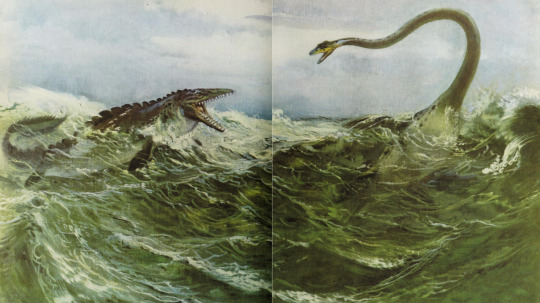
"In the same Upper Cretaceous seas, together with the Elasmosaurs, lived the carnivorous lizard Tylosaurus, which was over 30 feet long. Fights to the death between these giants were no doubt a frequent occurrence."
Prehistoric Sea Monsters. Written by Dr. Josef Augusta. Illustrated by Zdeněk Burian. 1966.
Internet Archive
323 notes
·
View notes
Text
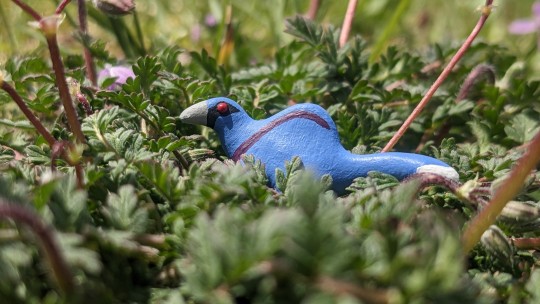

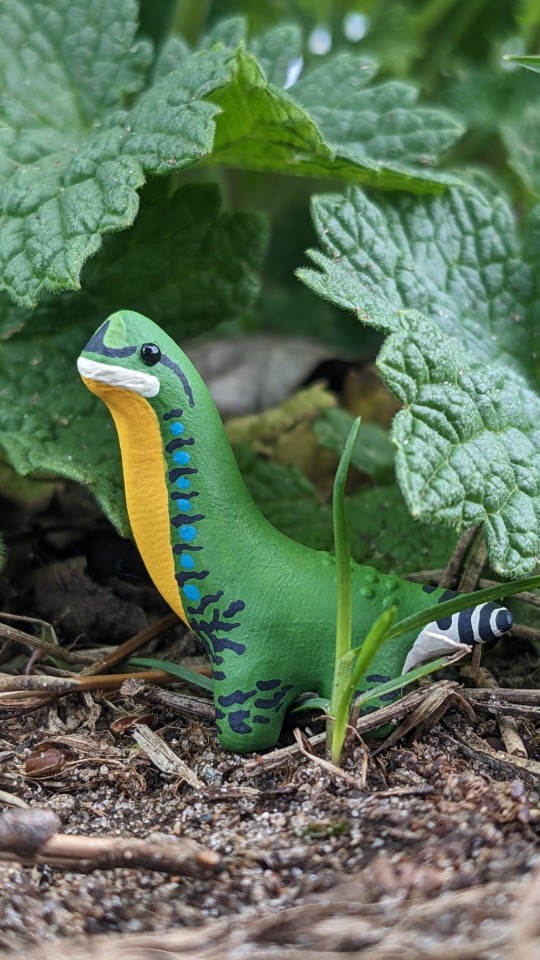





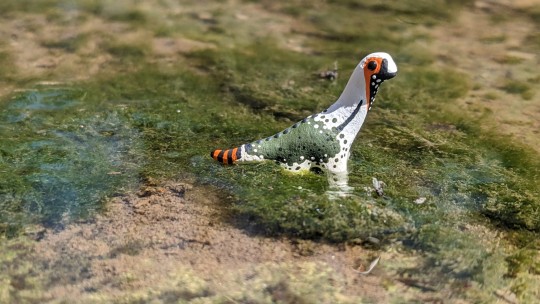
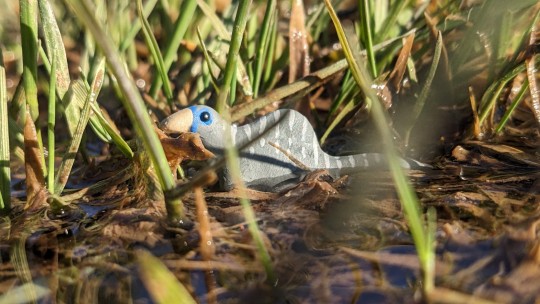
Behold photography!!!
#paleoart#paleoartist#paleontology#tinysaurs#my art#prehistoric#dinosuar#art#etsystarseller#etsyshop#etsyartist#europasaurus#mammoth#sinosauropteryx#elasmosaurus#koolasuchus#deinocheirus#brachiosaurus#ophthalmosaurus#photography
162 notes
·
View notes
Text
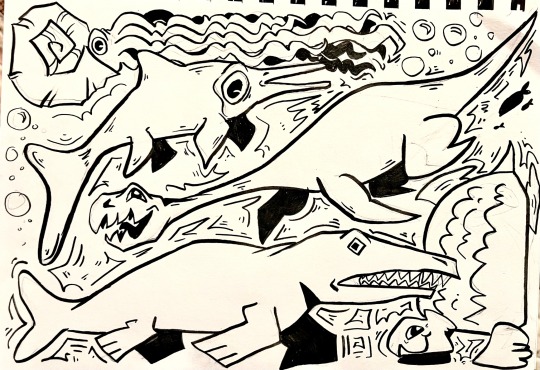
Another drawing/doodle for tonight! More specimens from the museum I work at! This time they are all sea creatures!!! None are actually dinosaurs but they lived during the same time period!! 🌊
#ammonite#baptanodon#elasmosaurus#plioplatecarpus#archelon#mesozoic#sea creatures#guys I’m on a roll tonight#art#drawing#sketchbook#prehistoric
107 notes
·
View notes
Photo


gay and lesbian paleo wallpapers
(free to use with credit)
#art#digital art#paleo art#pterosaur#plesiosaur#elasmosaurus#pterodactyl#lesbian#gay#vincian#mlm#wlw#pride#queer#pride flags
73 notes
·
View notes
Text
It's prehistoric creature nerd hours so I'm here to talk abt my favorite prehistoric marine reptile:
THE ELASMOSAURUS
This post was originally a google doc I wrote about the Elasmosaurus, all sources can be found at the bottom :]

Who was the Elasmosaurus?
The Elasmosaurus is, as stated before, a marine reptile and not a dinosaur. It is one of the most well known plesiosaurs in the world, and is notable for its extremely long neck. Elasmosaurus lived in the late cretaceous period, and had a diet consisting of small fish and marine invertebrates (piscivore). I find the elasmosaurus to be particularly interesting because of its physical attributes and its complicated discovery.
Elasmosaurus is part of the genus Elasmosauridae. This genus is best known for their remarkably long necks, longer than most plesiosaurs. The elasmosaurus had the second most neck vertebrae of any other creature to ever live on earth, and had a whopping 72 vertebrae. This is only 4 less vertebrae than the Albertonectes (an extinct plesiosaur related to the Elasmosaurus.) Its neck measures in at about 23 feet long (7.1 meters), and its entire body, head to tail, measures in at about 45 feet (14 meters), and weighed 8-10 tons. When the Elasmosaurus was first being studied and reconstructed, it was thought that it could coil its neck like a snake and had lots of flexibility. Some scientists even speculated that in order to hunt, the Elasmosaurus could extend its long neck above the water and look for fish below, but these theories have since been disproven. The neck of the elasmosaurus would have been held quite straight with little movement up and down, but this was actually a key part of its hunting method. The Elasmosaurus most likely would swim up to a school of fish, hiding itself in the darker parts of the water. It used its long neck to grab the fish in its mouth quickly, while not attracting a whole lot of attention. This saved energy because it would not have to swim after fast moving prey. Elasmosaurus was probably not a very fast swimmer, so their way of hunting was essential to their survival. Since it only caught small fish and marine invertebrates, Elasmosaurus would swallow all of its prey whole. Some small stones have been found in remains of Elasmosaurus, and it has been speculated that it would swallow these small stones to help breakdown food. Most paleontologists also believe that the Elasmosaurus gave birth to live young in the water and did not lay eggs.
History
The Elasmosaurus was first discovered in 1868 by Dr. Theophilus Turner (although this is not proven to be true, there are a couple seperate accounts of who originally found the fossils), a military doctor in Kansas, and was sent to paleontologist Edward Drinker Cope for study and identification. Edward Drinker Cope received the specimen in March of 1868, and had no prior knowledge of how to assemble a plesiosaur. He assumed that this marine reptile would likely look similar to the modern day land lizard, with a short neck and long tail, and mistakenly put the head on the end of the tail. In his time, he mostly specialized in lizards, and no one had yet discovered a plesiosaur the size of the elasmosaurus. The history after this point gets a little blurry, but some accounts say that Othniel Charles Marsh, a paleontology professor at Yale University, was the one who pointed out this error. This is said to have been what started what would be known as the “Bone Wars” between the two paleontologists.
Cope announced the discovery of the Elasmosaurus in March 1868, but didn’t tell of his mistake while assembling the Elasmosaurus until August 1869. Marsh would ridicule Cope for this mistake throughout their entire hate-filled feud.
E. D. Cope and the bone wars
E. D. Cope was born on July 28th, 1840 in Philadelphia, Pennsylvania. He was an American paleontologist who was well known for discovering about a thousand different species of extinct vertebrates in the United States. As a young boy, he was described as a “child prodigy” as published his first scientific paper in 1859 at age 19.
The Bone Wars, also named the Great Dinosaur rush, was a rivalry between E. D. Cope and Othniel Charles Marsh. Both paleontologists competed to see who could discover more than the other, and financially drained themselves in their pursuit for paleontological supremacy. Although they ruined themselves and each other financially and both mens reputations were not the best, they both made significant discoveries in the field of paleontology.
------------------------------------------
Although the Elasmosaurus is one of the most well known of the plesiosaurs, not much is known about it. I couldn't find an exact number, but not many Elasmosaurus specimens have been found, making it incredibly hard to study. All of the specimens are incomplete, and although scientists can use prior research to reconstruct the skeleton of this majestic creature, there's still much about Elasmosaurus left to discover. If I'm missing anything or something seems incorrect, plz comment or reblog and let me know!
Sources
https://dino.fandom.com/wiki/Elasmosaurus
http://www.prehistoric-wildlife.com/species/e/elasmosaurus.html
https://plesiosauria.com/directory/genera/elasmosaurus/ (slightly outdated)
https://en.wikipedia.org/wiki/Bone_Wars
https://plesiosauria.com/the-university-of-british-columbias-new-elasmosaurus/
https://ansp.org/exhibits/online-exhibits/stories/bone-wars-the-cope-marsh-rivalry/
E. D. Cope’s original publication
http://oceansofkansas.com/cope1868a.html
41 notes
·
View notes